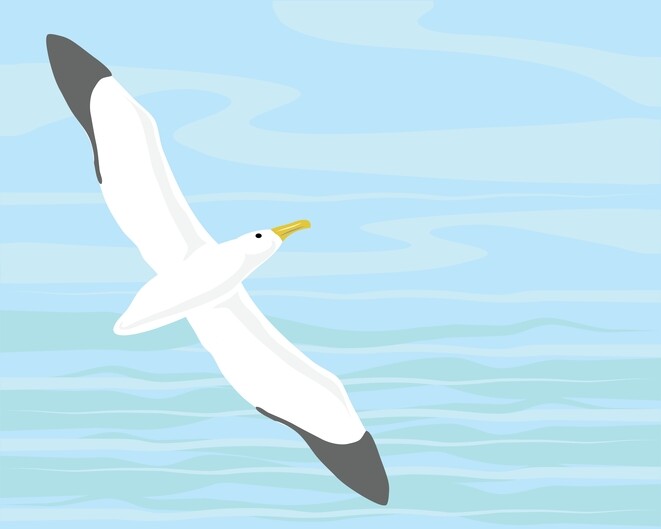Our selected destination for hikes today was too windy and the surf too rough so (as determined by the 6’8” Norwegian ice captain in a zodiac scouting/depth surveying maneuver), as is not uncommon for Nat Geo/Lindblad, plans were changed – we stay flexible! We started the day with a lecture by Diego Pol, a paleontologist who has been working for National Geographic for 20 years. He told the fascinating story of co-heading the team who dug it up. Diego received an invitation from a rancher, who had found a piece of bone protruding up from his land that he knew wasn’t a rock. Long story short, it was the largest dinosaur that’s ever been discovered. Needless to say, it turned out to be a multi year project.
Here are a couple of photos from his presentation, one from the American Museum of Natural History (we got to see this model in our past, never knowing we’d get to meet the guy who uncovered it), and a link:



https://www.amnh.org/exhibitions/permanent/orientation-center/the-titanosaur
He told another story about carrying dinosaur eggs through TSA, on their way to a linear accelerator, which had the ability to see through their tough shells.
A little more about Diego, who’s also a photographer:
Paleontologist Diego Pol is head of the science department at the Egidio Feruglio paleontology museum in Patagonia, Argentina. Diego has worked on multiple international projects and published over 90 papers on fossils from Patagonia, South Africa, Madagascar, Colombia, Brazil, Mongolia, and China. During the last ten years Diego’s research has focused on the remarkable animal biodiversity of the dinosaur era preserved in Patagonia. Diego and his research team have recently discovered fossils of over 20 new species of dinosaurs, crocs, and other vertebrates, revealing new chapters in the history of Patagonia’spast ecosystems. This includes the discovery of the largest known dinosaur so far, the titanosaur Patagotitan, a 122-feet long herbivore estimated to weigh 70 tons. He earned his doctorate at Columbia University in 2005 and worked at the American Museum of Natural History.
I didn’t know that Patagonia was such a hotbed of dinosaur activity. Not only dinosaurs, but Darwin spent time here as well, and we found out in the following lecture that he actually got to see the Osorno volcano, the one we could see from our hotel, erupt in 1835.
After lunch, the captain and expedition leaders found another location for us and the weather cleared. We took a zodiac cruise around Isla Elvira and Isla Leucayec within the Aysen Region.

Saw sea lions, flightless steamer ducks, cormorants, dolphin gulls, and Chilean dolphins. Not a bad substitution. Thanks to Ron for the dolphin picture.



Our guide and zodiac driver was Dennis Cornejo, on the left in this picture.

A little more about Dennis:
Dennis has spent more than half of his life working with Lindblad Expeditions. He first studied biology in the Sonoran Desert. It was his work with the Arizona-Sonora Desert Museum that brought him into contact with Sven Lindblad. Dennis was working with sea turtles in Mexico, desert tadpoles in southern Arizona and evaluating various legume trees for arid lands agriculture throughout the Sonoran Desert. Sven asked him if he would be interested in working on a ship as a naturalist in Baja California… a simple ‘yes’ turned out to be perhaps the most important decision he ever made!
At first, life as a Lindblad naturalist, working during the winter while on break from university, exploring Baja California while guiding and lecturing, was a positive feedback loop for his academic goals. Spending time with guests, who possessed incredible amounts of life experience and enthusiasm, soon eroded Dennis’ dreams of a career in Academia. However, during this time he earned a master’s degree with a thesis on the reproductive strategies of Sonoran Desert toads and a PhD with a dissertation on the mechanical design and biogeography of columnar cacti (large cacti including the saguaro and the cardon). For almost 40 years Dennis has explored and learned with Lindblad. At first in the Sonoran Desert, then the temperate rainforest of Southeast Alaska, the topical rainforests of South America and Oceania and many, many other places: dry to wet, hot to cold. As his world experience increased, so did Dennis’ interests… from reptiles and amphibians, to flowering plants, insects and other invertebrate and lichens. He also worked for 15 years as an Undersea Specialist diving and making videos from Antarctica to Svalbard to Papua New Guinea. Now he is out of the water and on the tundra, so what next? With Lindblad Expeditions there is no limit with the whole world to choose from!

